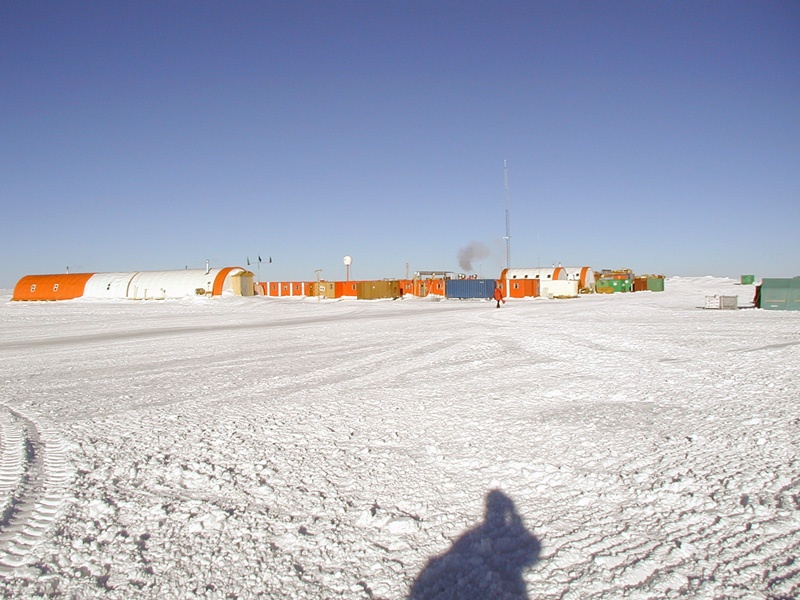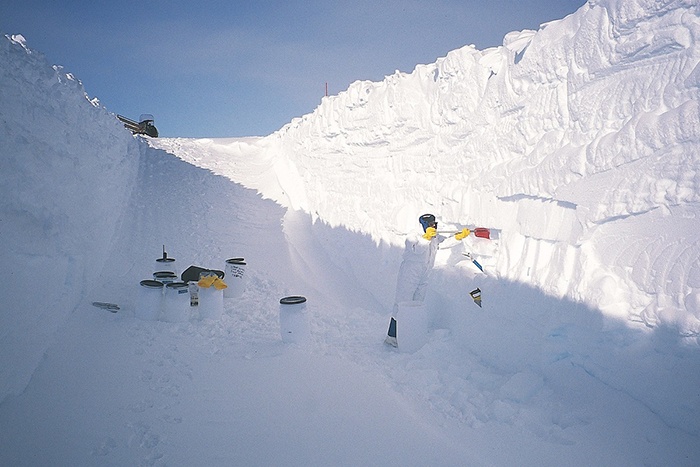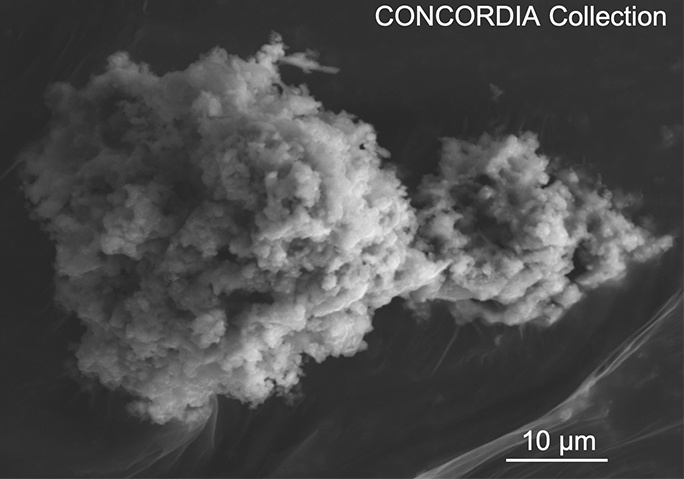Earth Gains 5,200 Tons of Dust From Space Every Year
By Nancy Atkinson
Whenever I wipe the dust off my coffee table or catch a glimpse of dust motes floating in sunlight, my spacey mind always wonders, is any of that cosmic dust?
It just might be. But the amount of space dust that lands on our planet every year might surprise you.
Scientists have long known that there is annual flux of extraterrestrial material deposited on Earth, which mainly comes in the form of tiny particles, primarily from comets and asteroids. These sub-millimeter-sized dust grains are the ones that can make it down through our atmosphere unscathed. But the exact amount has never been calculated, due to the difficulty in collecting and monitoring this dust. The biggest issue is that Earth itself and the atmosphere are dusty places, so if you’re collecting dust, how do you discern between Earth dust and space dust?
For the past 20 years, a group of scientists have collected dust in the least dusty place on Earth: the plains of central Antarctica, which are always covered with snow and ice.

An international collaboration of researchers from France, the United States and the United Kingdom conducted six expeditions over two decades to the Franco-Italian Concordia station, called Dome C, located 1,100 kilometers from the coast in of Antarctica. The Dome C area is considered ideal for the study of micrometeorites because of the near absence of terrestrial dust and low rates of accumulation of snow.
Using a calculated system of extracting samples of snow in 2-meter deep trenches, the researchers collected extraterrestrial particles, ranging in size from 30 to 200 micrometers. They were able to collect enough samples over the years to measure an annual flux, which corresponds to the mass accreted on Earth per square meter per year.
The team reports that if their results are applied to the whole planet, the total annual flux of micrometeorites represents 5,200 tons per year.

“This is the main source of extraterrestrial matter on our planet, far ahead of larger objects such as meteorites, for which the flux is less than ten tons per year,” according to lead researcher Jean Duprat from the French National Centre for Scientific Research (CNRS).
To determine how much cosmic dust falls in my nearby surroundings per year, a quick back-of-the envelope calculation yields about 9 grams per square kilometer or .85 ounces per square mile.
In other words, we don’t have to worry about a Pompeii-type event of cosmic dust covering us each year.
The team’s paper also explains how small particles of space dust make it through our atmosphere without burning up:
The degree of heating experienced by the particles during their atmospheric entry depends on various factors including the initial mass of the particles, their entry angle and velocity. The ablated metallic vapours oxidize and the resulting metal oxides, hydroxides and carbonates condense into nm-sized particles termed meteoric smoke (Plane et al., 2015). These particles are transported by the general atmospheric circulation until eventually deposited at the surface, where their flux can be evaluated by elemental or isotopic measurements (Gabrielli et al. (2004).
The research team compared the flux of micrometeorites with theoretical predictions and confirmed that most micrometeorites probably come from comets (80%) and the rest from asteroids.
The researchers say their study provides valuable information to better understand the role played by interplanetary dust particles in supplying water and carbonaceous molecules on the young Earth.
The study will be available in the journal Earth & Planetary Science Letters on April 15, and is available here.
Further reading: Press release from CNRS
Lead image caption: Electron micrograph of a Concordia micrometeorite extracted from Antarctic snow at Dome C. Credit: Cécile Engrand/Jean Duprat
The post Earth Gains 5,200 Tons of Dust From Space Every Year appeared first on Universe Today.

April 13, 2021 at 09:15PM
via Universe Today read more...

Post a Comment